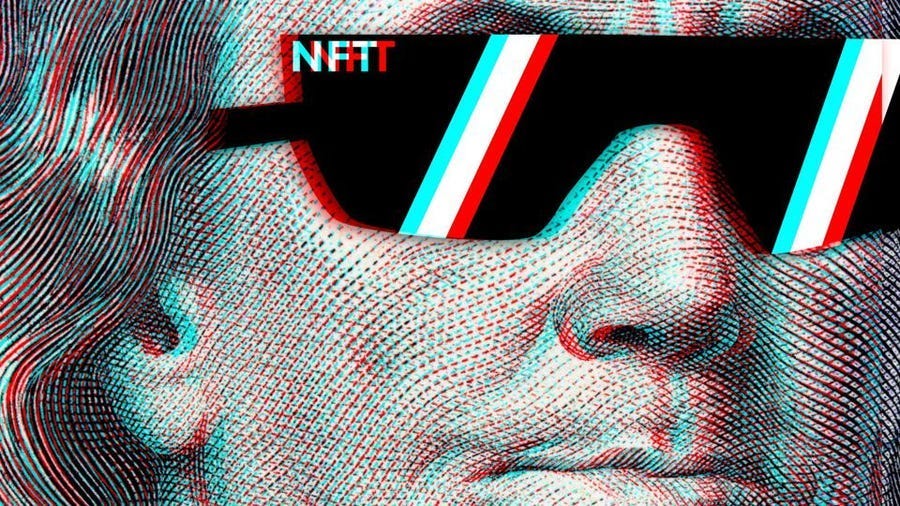SCROLL TO SITE
SCROLL TO CURRENT LIST
The Forbes Advisor editorial team is independent and objective. To help support our reporting work, and to continue our ability to provide this content for free to our readers, we receive payment from the companies that advertise on the Forbes Advisor site. This comes from two main sources.
First, we provide paid placements to advertisers to present their offers. The payments we receive for those placements affects how and where advertisers’ offers appear on the site. This site does not include all companies or products available within the market.
Second, we also include links to advertisers’ offers in some of our articles. These “affiliate links” may generate income for our site when you click on them. The compensation we receive from advertisers does not influence the recommendations or advice our editorial team provides in our articles or otherwise impact any of the editorial content on Forbes Advisor.
While we work hard to provide accurate and up to date information that we think you will find relevant, Forbes Advisor does not and cannot guarantee that any information provided is complete and makes no representations or warranties in connection thereto, nor to the accuracy or applicability thereof.
Updated: Nov 10, 2022, 2:00pm
Non-fungible tokens (NFTs) give you ownership of artwork, music, videos and other online collectibles. They exist on blockchains, the innovative technology that underlies cryptocurrencies like Bitcoin.
As the popularity of NFTs has grown, the NFT market has climbed to more than $US40 billion in value, according to The 2021 NFT Market Report released by blockchain data company Chainalysis.
Here are some of the most popular and well-rated NFT marketplaces where you can buy and sell these digital assets.
Related: A Guide To NFT Marketplaces
Featured Partners
1
eToro
Invest with a crypto brand trusted by millions
Buy & sell 70+ cryptos or earn extra coins with eToro’s easy staking process
OpenSea is ancient by NFT standards, having launched in 2017, and it’s also among the largest NFT marketplaces active today. It hosts many popular NFTs, including art, music, photography, trading cards and virtual worlds.
The core cryptocurrencies used on OpenSea are Ethereum, Solana, and USDC, and payment options feature other cryptos. Just note that you can’t use fiat currencies like AUD or US dollars.
On the bright side, OpenSea is very user-friendly for beginners. You can set up an account for free within minutes and start browsing NFTs immediately, and you can even create NFTs on their platform.
For costs, OpenSea charges a fee equal to 2.5% of every transaction. You must also pay the ‘gas fee’ for completing NFT transactions with Ethereum. Gas fees are the transaction fees paid to miners.
If you’re looking to avoid the gas fee, you can buy and sell NFTs with Polygon. But you’ll need to ensure that the NFT item of interest displays the Polygon logo.
In short, OpenSea is a solid choice for beginners looking to get started with a straightforward marketplace and who want as many options as possible for NFTs.
CoinSpot was founded as an Australian cryptocurrency exchange in 2013, and pivoted its offerings to include an in-platform NFT marketplace in March this year. To date, it has more than 30 different collections with more than 400,000 individual NFTs available to buy, sell and trade on its marketplace.
Speaking with Forbes Advisor, CoinSpot business development and partnerships executive Tim Wilks said that the company “undertakes a rigorous due diligence process to ensure all NFTs listed on the marketplace are legitimate and belong to verified collections”.
CoinSpot markets itself as the lowest fee NFT marketplace for Australians. On its website, it says it charges a flat service fee of 0.9%. A gas fee will also incur, depending on the market activity.
Wilks adds that, unlike other marketplaces, CoinSpot offers more than 350 cryptocurrencies for users to pay with. While CoinSpot does not (yet) offer credit or debit card payments, you can add Australian dollars from a card to your CoinSpot Wallet for a 2.58% transaction fee. There is then a 0.1% market fee when making market orders of cryptocurrency, and no fee for AUD withdrawals.
CoinSpot’s easy-to-use interface, extensive cryptocurrency choice and 24/7 customer support makes it the “ideal choice for Australians looking to access the NFT market”, Wilks says.
Rarible allows users to buy and sell art, collectibles, video game assets and NFTs. You can buy and deal on Rarible with Ethereum, Flow and Tezos.
Rarible charges a flat 2.5% fee on every transaction, plus any gas fees. One nice feature is you can buy NFTs using a credit card, allowing transactions in fiat currencies
An interesting aspect of Rarible: rather than having in-house management decide everything, Rarible created its own native token called RARI. The holders of RARI get to vote on company decisions like company policy changes.
In 2021, Rarible announced a partnership with Adobe to make it easier to verify and protect the metadata for digital content, including NFTs.
For those that want access to a large network with solid connections, Rarible could be the best NFT marketplace. At the same time, it also still follows a decentralised mindset.
If you’re a major fan of US basketball, the NBA Top Shot marketplace lets you buy NFTs of great moments in basketball history.
You can buy video clips, play highlights and art for both the NBA and the WNBA. But some of these ‘Moments’ aren’t cheap. A LeBron James slam dunk video fetched $208,000 in February 2021.
The NBA built and manages this NFT marketplace, and they have exclusive rights to these video clips. Plus, you know you’re dealing with a large, reputable organisation.
The NBA Top Shot marketplace is one example of major companies getting on this trend. Others include the DraftKings Marketplace and the Associated Press’ NFT marketplace. Even GameStop plans to launch an NFT marketplace this year.
Users can purchase Moment NFTs with credit/debit cards or select cryptocurrencies, such as Bitcoin, Ethereum, Bitcoin Cash, DAI or USDC. And of course, fees are added to the purchase price, whether you’re buying that iconic moment with a credit card or cryptocurrency.
A new player on the scene is Magic Eden, an NFT marketplace that was founded by three Australians only last year in 2021. Within nine months the Aussie tech minds had scored a $US1.6 billion valuation following a $130 million raise in a Series B round co-led by Electric Capital and Greylock Partners.
According to its website, Magic Eden currently has more than 8000 collections and a secondary trading volume of $1.9 billion. The marketplace is built on the Solana blockchain, and is reportedly the leading marketplace on Solana.
When choosing to purchase an NFT, Magic Eden users can connect their external crypto wallets. Initially Magic Eden only accepted those built on the Solana network; however, it has now opened up to Ethereum as well.
Magic Eden takes 2% on all transactions and honours the royalties set by NFT creators, which are charged to the buyer immediately upon purchase.
Anybody can mint NFTs from Magic Eden’s launchpad, but creators who want to launch a collection for general minting are required to submit an application via the website.
Binance, one of the largest cryptocurrency exchanges, added an NFT marketplace in 2021. The international crypto exchange is one of many other industry players entering the NFT sector, like Crypto.com NFT, which describes itself as a highly-curated NFP marketplace.
Binance NFT offers the typical digital assets found on other major platforms: artwork, gaming items, and collectibles.
A major advantage of Binance NFT is that it charges very low fees. The platform only deducts a 1% trading fee. It’s also a user-friendly platform built using similar technology and layouts as their exchange.
As such a large player in the crypto space, Binance also runs on its own blockchain, giving it an added advantage.
Nifty Gateway is known for hosting expensive and exclusive NFT sales, including digital artist Pak’s “The Merge,” which sold for $US91.8 million. It made headlines when the platform was acquired in late 2019 by Gemini, which is run by the Winklevoss twins, Cameron and Tyler Winklevoss.
This marketplace focuses on artwork, especially artwork from celebrities and top artists. To boost demand, Nifty Gateway uses an “open editions” system. When a new type of NFT comes out, you can only buy editions for just a limited time.
This marketplace does allow you to make purchases with your credit card. Nifty Gateway could be the way to go if you’re looking to make a large investment in NFTs and want access to higher-end options.
SuperRare is a high-end NFT art marketplace that positions itself in the NFT ecosystem as an art gallery. This marketplace doesn’t accept “meme style” NFTs, and is highly selective with NFT submissions.
Given that SuperRare spends so much time reviewing work before it’s available for sale, investors can feel more confident in the quality. For their services, SuperRate charges 15% the first time an NFT is sold on the primary market. There is also a flat 3% of every transaction, which the buyer pays.
SuperRare could be a good choice for someone looking for high-end NFT artwork, especially pieces with a more classical style.
An NFT marketplace is a digital platform for buying and selling NFTs. These platforms allow people to store and display their NFTs plus sell them to others for cryptocurrency or money. Some NFT marketplaces also allow users to mint their NFTs on the platform itself.
In exchange for a fee, the NFT marketplace will typically handle the transfer of an NFT from one party to the other.
Each NFT marketplace has its own system for how it operates. The types of NFTs available, fees, payment options, permitted blockchains and other rules will depend on which one you use.
When you create an account with an NFT marketplace, you can browse through all their available options for sale. You can also add a payment method, and some require you to link a crypto wallet to pay with crypto, while others allow you to use a credit card.
Some sites let you buy NFTs directly for a fixed price, while others will use an auction. If you complete the transaction, the NFT marketplace will record it on its blockchain showing the change of ownership.
In the world of NFTs, minting refers to the process of creating new NFTs on a blockchain, most commonly Ethereum.
When you mint an NFT, you’re recording data that comprises a new NFT in a new block that’s then added to a blockchain.
Minting an NFT typically comes with fees. For NFT systems that use the Ethereum blockchain, this cost is paid in gas, a crypto token used to perform functions on the Ethereum blockchain.
More and more, NFT marketplaces are becoming creative about how, when and to whom minting fees are charged.
Featured Partners
1
eToro
Invest with a crypto brand trusted by millions
Buy & sell 70+ cryptos or earn extra coins with eToro’s easy staking process
David is a financial writer based out of Delaware. He specializes in making investing, insurance and retirement planning understandable. Before writing full-time, David worked as a financial advisor and passed the CFP exam.
Sophie Venz is an experienced editor and features reporter, and has previously worked in the small business and start-up reporting space. Previously the Associate Editor of SmartCompany site, Sophie has worked closely with finance experts and columnists around Australia and internationally. Sophie grew up on the Gold Coast and now lives in Melbourne.


